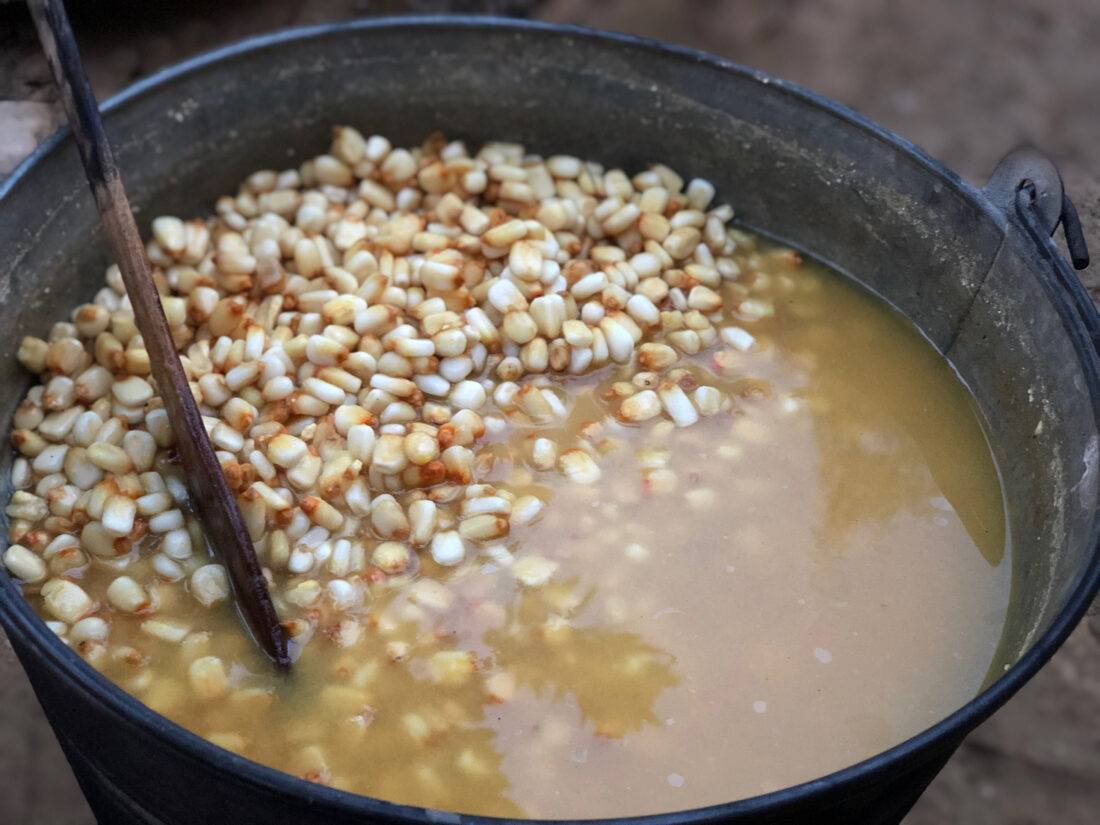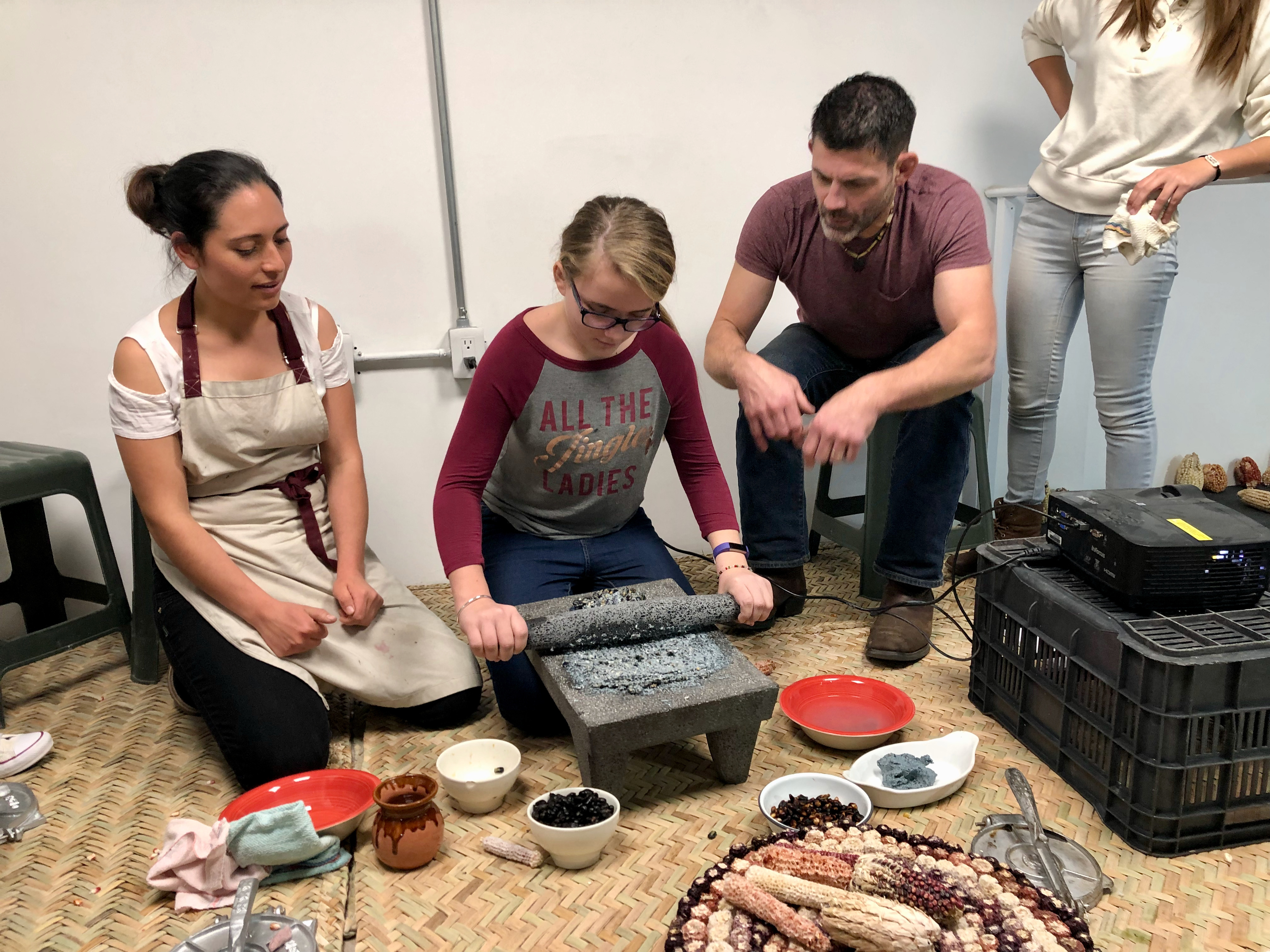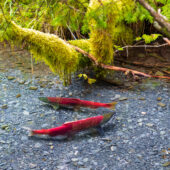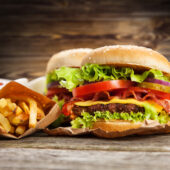Access to all articles, new health classes, discounts in our store, and more!
Maize Or, The Corn Conundrum

We were late. The confused cab driver had driven 15 minutes in the wrong direction from our Airbnb before we realized the error, and it took another 10 minutes to convince him that we were heading the wrong way. Damn! We had been doing so well! In fact, Christina and I both felt like rock stars after having managed to get our entire family up, showered, fed, and out the door on time despite the previous 24 hours of mayhem. The day before Christmas Eve, one of the busiest travel holidays of the year, we had rushed home from work, grabbed the kids, loaded the truck, driven to the Philadelphia airport, and barely made it to the boarding gate on time. It was after 1 a.m. by the time we landed in Mexico City, collected our bags, found an Uber driver, and crashed blissfully into bed at our Airbnb. To successfully drag our jet-lagged family of five up and out of the house for an early morning class on traditional tortilla production – for which not all members of the Schindler clan equally shared my excitement – was a feat of heroic proportions.
Finally, after Christina and I teamed up with Google Maps and my broken Spanish to direct the driver, we arrived at Cal y Maíz, where founder Rigel Sotelo was waiting. He guided us around the back of the shop, past two women who were busy making tortillas, and upstairs to a platform loft he had set up as a classroom. At the last turn on the steps, we passed a shelf displaying a vivid array of different maize varieties – and suddenly I was catapulted back to being about seven years old, standing at Sickles Farm in Little Silver, New Jersey. My mother, sister, and I were there to buy Halloween pumpkins, but I was captivated by that colorful, hard shelled corn that Americans typically bundle up and hang on their front doors as an autumn decoration. “You don’t want to eat that,” one of the men working the register had said to me. “That’s Indian corn. It’s poisonous.” That offhand, completely erroneous comment skewed my understanding of maize for decades.
You’ll notice that I use the words corn and maize interchangeably, and they are, for all intents and purposes, the same. But the term maize is historically and scientifically more accurate. All corn as we know it today descends from New World maize (more on this later), and the word is derived from the Taino mahiz and Spanish maíz. It’s also the scientific name: Zea mays. The word corn derives from an Old English word that means grain, and it may take on various meanings depending on geography; in Scotland and Ireland, oats are called corn, while in England, wheat is called corn. Maize, then, is a more precise term for what most Americans call corn, and also the more common word globally. But the malleability of the name also reflects my confusion surrounding this common food that began back at Sickles Farm, a lack of knowledge that eventually led me and my family to Mexico to learn more about maize and an ancient process called nixtamalization.
Nixtamalization: It’s a lot of word to get your mouth around, but it’s one you’re going to want to know as you expand your knowledge of ancient food technologies and work to understand their importance in our contemporary diets. Because maize – corn – pervades your diet, whether you’re conscious of it or not. It’s in everything from salad dressing to cereal, mostly in the form of high-fructose corn syrup (HFCS). According to Tufts University’s Friedman School of Nutrition Science and Policy, the average American consumes 160 pounds of corn annually, about 60 pounds of it in the form of high-fructose corn syrup. “Thanks mostly to the booming popularity of HFCS,” the institution notes, “40 percent of all packaged, processed food sold in American supermarkets contains corn.” How that affects our health – contributing to obesity, heart disease, and diabetes, among other illnesses – is an ongoing conversation in our culture, and if you’re reading this, chances are you are already well versed in the monster that maize has become in our diets. But how maize itself is processed can mean the difference between a healthy, nutritious food and one that can make you deathly ill.
If you think I’m exaggerating, consider the early 1900s in the southern United States, where steadily and inexorably, millions of people started getting sick. They developed terrible, disfiguring skin rashes when exposed to the sun. Their tongues grew swollen, their mouths bled, they suffered delusions and even dementia. Between 1907 and 1940, according to the National Institutes of Health (NIH), about three million Americans contracted the mysterious illness, and some 100,000 died. And this wasn’t new. The same illness had first been described in Spain in 1735 by physician Don Gaspar Casal; it was mistaken for leprosy. Then it turned up in Italy in 1771, where it got its name – pellagra – which means rough or sour skin. It even made an appearance at the end of the potato famine in Ireland. The NIH notes that records in the US are sketchy, but by 1912, “the state of South Carolina alone reported 30,000 cases and a mortality rate of 40 percent.” By way of comparison, by January 2021, the mortality rate in South Carolina from Covid-19 was just under 2 percent.
This sickness wasn’t from a virus, and it baffled disease experts for generations. Since it affected impoverished areas more than others, it was thought to be an infectious “disease of filth.” Not until 1917 did Dr. Joseph Goldberger finally prove that it was not infectious or viral but rather dietary, when he conducted experiments that involved participants eating corn-based diets versus diets based on fresh vegetables, meat, and milk. Those eating the corn-based diets exhibited pellagra symptoms within weeks; the others stayed healthy. Still, convincing other medical and health professionals was an uphill battle. Ultimately, he and his partner, Dr. George Wheeler, went so far as to inject themselves with the blood of infected victims to show that it wasn’t a virus or germ that was causing the sickness. Even that was not enough, and Goldberger died in 1929 without having entirely solved the full mystery. Ten years later, scientists finally uncovered the commonality: a deficiency of niacin (vitamin B3). As Goldberger had predicted, corn was the culprit. It explained why pellagra ended up even in Ireland, when maize, aka “Indian meal,” was imported as famine relief food.
How on earth, you may be wondering, could a food as common as corn sicken and kill millions of people? And since it’s clear that most people today aren’t getting sick from pellagra (although it remains present in parts of the developing world, where people depend on maize as a staple food), why should we be concerned about corn in our diets today? The answers to these questions require us, again, to go back in time. And they serve as one of the starkest examples of how an ancient technology transformed a food that is difficult for humans to digest into something altogether more nutritious and bioavailable, and how we left that technology behind to our terrible detriment.
Archaeologists today believe that early peoples began domesticating maize more than 9,000 years ago in the Balsas Valley of Mexico, from a wild grass called teosinte. The genetic selections and modifications that have occurred over time have transformed wild teosinte into the maize we know today. Early forms of maize were small and had kernels that were individually encased in husks – they looked like shaggy clumps of fur, all clinging to a central stem – and they were laborious and time-consuming to clean. Changes to maize over time created a cob that is much larger and covered by one husk, drastically reducing harvesting and processing time. Today, maize comes in a variety of forms, from so-called Indian corn – the multicolored corn I saw that day long ago at Sickles Farm in New Jersey – to feed corn for animals, popcorn, and sweet corn that comes to us on cobs or in cans.

Cal y Maíz. Photo by Christina Schindler.
Anywhere maize has been introduced over millennia, it has come to dominate diets because it is filling, affordable, and easy to grow. The most widely produced crop in the world, grown in at least 164 countries, maize had a total production of more than 1 billion metric tons in 2019. It is the largest crop in the United States, with nearly 92 million acres of it planted in 2019, according to the USDA National Agricultural Statistics Service, ahead of soybeans by about 8 million acres. Nearly a third of those 92 million acres produced maize that went into our diets (another third was used for livestock feed grain, and the final third in ethanol). Maize is the basis of hundreds of foods, such as grits, breakfast cereal, polenta, and cornmeal, and it permeates processed foods in the form of high-fructose corn syrup and cornstarch.
Yet, maize presents a conundrum. It’s one of the hardest foods for our bodies to digest. The main component of its cell walls is indigestible cellulose. And although it contains high levels of niacin, this important vitamin remains locked away and inaccessible to our bodies unless maize is processed in a specific way. Early Mesoamerican farmers unknowingly stumbled onto this when they began to process maize by simmering dried kernels in a solution of water and wood ash, then steeping the mixture overnight. This is the first step in the process of nixtamalization. The next day, they could more easily remove the kernels’ hard outer coatings. Then they rinsed the grains; at this point, the product is called nixtamal or hominy. Nixtamal could be used as is, coarsely ground into hominy grits, or finely ground into a highly digestible, nutritious dough called masa. Today, masa is used in a number of traditional ways: pressed into tortillas, formed into tamales – which bear the name of the process itself – and even mixed into a delicious and nourishing drink known as atole. Combined with beans, nixtamalized maize provides a complete protein.
Over time, calcium hydroxide (commonly known as cal, pickling lime, hydrated lime, or slacked lime) and, on industrial levels, even sodium hydroxide (commonly known as lye) replaced wood ash (potassium hydroxide). But the process has remained the same and so has the result: The mixture of a base, like cal, with water creates an alkaline solution that chemically and physically transforms maize into its safest and most nourishing form possible for our digestive tracts. Through nixtamalization, these grains are detoxified. The process neutralizes antinutrients such as phytic acid, raises the calcium content by up to 400 percent, increases the protein quality by improving the amino acid balance and digestibility, and releases niacin from its bound form, which is unavailable to our bodies. Descendants of those early Mesoamerican farmers continue to use this process, and though maize is still a staple of their diet, they remain free of pellagra. When you skip nixtamalization, no matter how you cook corn, much of its nutrition stays locked up in the grain, which simply navigates our digestive tracts and gets expelled, taking its nutrition with it.
So, if Mesoamerican people’s process made maize a safe and nutritious staple food for thousands of years, how did pellagra become so devastating in the United States? Even while people in Mesoamerica were processing maize in this way, their traditional techniques did not accompany the growth of global maize consumption. Instead, simple grinding and cooking processes were developed that kept important nutrients locked within the maize, passing unabsorbed through our bodies and leading to malnutrition and niacin deficiency. This became dangerous and common anywhere that maize – which is cheap, filling, and adaptable to growing in a variety of regions – dominated the diet to the exclusion of other food and essential nutrients. Anywhere in the world, including the southern United States, where corn became a foundation of diet but traditional nixtamalization techniques didn’t travel with it, pellagra followed. Even today, people in developing countries who depend largely on maize still suffer from this – literally getting sick and dying from a niacin deficiency, even while eating large amounts of a food that contains plenty of niacin! Yet when we finally discovered the problem, we didn’t return to nixtamalization as part of the process. Instead, we began to artificially enrich maize-based foods with niacin. And this remains how we address the issue today, while continuing to seek innovations and genetic modifications of maize to solve the problem, rather than adopting a process proven over thousands of years.
The more I learned about nixtamalization’s ability to transform corn into the most nutrient-dense, bioavailable food it could be, the more I wanted to know. For me, there’s no substitute for learning directly from experts and using all of my senses to see, smell, hear, feel, and taste my way through a process. That’s why I had packed up the family and dragged them down to Mexico, and why we found ourselves at Cal y Maíz, where Rigel began our education by explaining that while more than 64 different varieties of corn are under cultivation in Mexico, all of them – in fact all varieties of corn grown around the world – come from a single variety of teosinte. He postulated that early farmers began nixtamalizing maize thousands of years ago not because they had a clue about niacin deficiency, but because they noticed that water boils faster when you add ash to it – saving time and fuel. During the workshop, we learned how to shell the olote (cob) by hand and with an oloteras, a traditional device made from leftover cobs bound together in a circle, which looked less like a tool than artwork. We watched as one of Rigel’s top tortilla makers demonstrated grinding maize on the metate, an ancient stone tool that she had grown up using with her mother every day to grind masa for her family. To show us how nixtamal is quickly turned into masa for commercial purposes, Rigel fired up the mechanized version of the metate, the molino – a machine that uses a 1.5-horsepower motor to rotate two grinding stones. We learned the finer points of tortilla making and cooking, and then we mingled traditional recipes – like tacos with quesillo (Oaxacan string cheese) and epazote, a Mexican herb related to lamb’s quarters – with contemporary gourmet versions that included fillings such as huitlacoche (a fungus that grows on corn and is considered a delicacy in Mexico), roasted bone marrow, and ant eggs.
Cal y Maíz provided a terrific opportunity for hands-on experience producing delicious and healthy tortillas on a modern, commercial scale. But I also wanted to see what this process looked like when used by a traditional family as part of their daily lives and diets. So, a few days later, we traveled high into the mountains of southwestern Mexico, where we spent a day with Juana, Emiliano, and their family, who lived in San Antonio de la Cal in a spotlessly clean, dirt-floored home made of recycled wood and corrugated tin. (Their town is so named because it’s literally built on a mountain of cal, which they harvest directly from the ground.) They showed us how they process their maize, starting with a palmful of cal that Emiliano pulled from a bag filled with white, chalk-like chunks of powdery rock. This was the perfect amount to nixtamalize 6 kilos of maize kernels, which is how much they process every other day to provide their family of five enough tortillas to last two days. He put the cal in a small bowl of water, which immediately began to bubble. Once the chemical reaction subsided, Juana added the mixture to a metal bucket containing maize kernels and additional water, then moved the bucket to the outdoor kitchen, where she balanced it atop a circle of rocks, under which burned a wood- fueled fire. After letting it boil for about an hour, Juana removed the bucket and set it aside, where it would steep till the next day. So that we could see the whole process, she moved to a second bucket containing maize that had already steeped overnight. Rubbing the kernels between her hands, she removed the skins and washed the nixtamal repeatedly until the water was clear.

look on. Photo by Brianna Schindler.
Then, Emiliano handed me the bucket of nixtamal and motioned me toward a gate; we had only a short window of time to grind this nixtamal, now that it had been washed. We headed for the molino, the community’s beating heart, where everyone gathers to transform their nixtamal into masa. Several women from the village were already there, their musical voices in constant and lively conversation, offsetting the clattering of the machine. They worked in fluid teams of three: one to monitor the distance between the molino’s grinding stones, which dictates the consistency of the final masa; one to feed the kernels from the hopper and regulate the thin stream of water that helps hydrate the masa and lubricate the machine; and a third to keep the grinding stones clear and scrape the drum clean. As people came and went and the molino rumbled nonstop, it was clear that like a local pub in a small town, this central processing facility was the place where everyone gathered at one point or another to talk, make plans, tell stories, and connect with one another. One by one women, children, and families dropped off their nixtamal to be ground, checked in with their neighbors and friends, and then headed home with their transformed food, now a smooth, moist dough that reminded me of moldable clay. They wrapped their masa in beautifully woven blankets and placed it in baskets for transport. Emiliano explained that each family’s masa is slightly different, determined by how much cal they use and how long they cook the cal and maize. These two variables affect nuances of the final flavor, texture, and color of the tortillas and represent an excellent way to maintain family identity while also engaging in a communal activity like the molino.
Our day with Emiliano and Juana ended with – what else – beautifully prepared food. On a huge ceramic comal – a round, flat griddle – over an open fire, Juana dry-roasted a few peppers and garlic, which she expertly crushed into a salsa in a ceramic bowl made for the job. Her daughter used a tortilla press to create tlayudas, extra-large tortillas typical of this region. We cooked, shared stories, and traded experiences and cultures. Through a simple tortilla, we learned about and connected with a generous family, an entire village, and a process that is thousands of years old and can still be used to improve our contemporary diets.
Today, since baked goods are fortified with niacin, we can safely eat as many corn-based products as we want without developing pellagra – although, if you eat enough processed foods that contain high-fructose corn syrup, you’ll have other health problems to deal with. But knowing the clear benefits of nixtamalization, it makes enormous sense to use nixtamalized maize whenever and wherever you can to reap the maximum nutrition from this ubiquitous and ancient grain. As an educated consumer, you can choose products that use only corn that has been nixtamalized; Bob’s Red Mill masa harina, for instance, clearly states on the label that it’s made from nixtamalized corn. And to connect more directly with our dietary past and empower your own health, you can easily nixtamalize your own maize at home and use it for everything from tortillas and pozole to corn nuts and chips.
Tips and recipes
How to shop for the best tortillas
Ideally, you will make your own tortillas from maize you have nixtamalized and turned into amazing masa. But if that’s not an option, here are some tips for how to buy the next best thing:
- Purchase tortillas from a store. Some stores (especially Mexican or Hispanic grocery stores) offer fresh or frozen tortillas. Read the label. If the only ingredients are maize, an alkaline ingredient (cal, hydrated lime, or calcium hydroxide), and water, they are worth purchasing.
- Purchase tortillas from a local tortilleria that has a molino on site to ensure they are nixtamalizing their own maize.
- Make your own tortillas from commercially available masa flour, or dried nixtamalized maize. The ingredients list should have only maize and an alkaline ingredient (cal, hydrated lime, or calcium hydroxide). The downside to this option is that most masa flour has been degerminated, so the most nutrient-rich part of the maize is missing. It’s akin to the difference between whole wheat flour and white flour.
Baking with masa
For a special treat, add leftover masa to your flour the next time you bake bread. It will give the bread a unique taste and texture and increase its nutritional value. Because masa is moist, you can add up to 20 percent of the total weight of the flour and not throw off the dough’s flour/water ratio. In other words, you can safely add 20 grams of masa to 100 grams of flour with no additional adjustments.
Plastic and tortillas?
We all want to remove plastic from our lives. But there are a few situations in the kitchen when plastic makes it much easier to get a superior final product, and making tortillas is one of them. Masa dough is slightly sticky, and whether you are using a tortilla press or a rolling pin, you need to put something between each side of the dough to allow it to release. Believe it or not, the cheapest, thinnest plastic (think grocery store bags) works best. Flatten the bag, place it in the press, and trace the circular edge of the press with a marker. Cut what you’ve traced with a pair of scissors; you will be left with two circles (both sides of the bag). If you’re not using a press, you can still use this technique to roll out your tortillas with a rolling pin. If you really don’t want to use plastic, you can substitute waxed paper or parchment.
Nixtamal/hominy
Makes about 2 quarts
The physical and chemical changes that take place when maize is heated in an alkaline solution are nothing short of magical. This process transforms maize from a bland, nutritionally inaccessible, boring grass seed into a nourishing, delicious, aromatic, and prehistoric and historic staple in many parts of the Americas. Known by several different names, such as nixtamal and hominy, the product of this ancestral technology is the first step toward producing foods such as tortillas, hominy grits, and pozole. Dried maize and cal can be found online at masienda.com.
10 cups (2,366 grams) water
4 cups (800 grams) dried maize (corn) kernels
1½ tablespoons (12 grams, or 1.5% of the weight of the corn) cal or pickling lime
Combine the water, maize, and cal or pickling lime in a large pot. Stir to combine and bring to a simmer over medium-high heat. Reduce the heat and simmer for about 30 minutes. There are two tests to alert you when it is ready. First, take a kernel and rub it between your fingers. The skin should slip off. Next, place the kernel in your mouth and bite gently. It should have the texture of al dente pasta.
When ready, turn off the heat, cover, and let steep overnight (about 12 hours). After steeping, drain the corn in a colander and rub it between your hands to break up some of the dissolved skin; now the maize is properly called nixtamal. Rinse the nixtamal in water. The skins will drain with the water through the holes in the colander. Repeat rubbing the kernels with your hands and rinsing to remove more skins. If you are making hominy for recipes such as pozole, hominy grits, and Nix ’Nacks, continue to rinse until all of the skins are completely removed. If you are going to grind into masa, repeat rubbing and rinsing only until about half of the skins are removed. The remaining gelatinized skins help the final masa dough stick together and also contribute to the unique flavor of traditional tortillas.
Nixtamal should be ground into masa the same day it is rinsed, preferably within a few hours, then wrapped tightly to keep it from drying out and used within 24 hours. Hominy (nixtamal with all the skins removed) can be stored, covered, in the refrigerator for up to 1 week or in the freezer for several months.
Tortillas
Makes about 24

Ideally, nixtamal is ground into masa by hand on a stone metate or mechanically on an electric molino. Making masa with stone grinds the nixtamal and also “smears” it into a smooth paste. However, with a few modifications, you can make excellent masa with the equipment you already have in your kitchen. Your food processor will break down the nixtamalized kernels into a smooth dough, but it does so by cutting instead of grinding and smearing—not ideal, but OK. Also, the motors in food processors cannot handle thick dough, so you may need to add a little extra water to allow it to work long enough to break it down fine. If that is the case, the resulting dough will be a little too wet for tortillas; you can reduce the hydration/stickiness by spreading it out and letting it dry a bit or by adding a little commercial masa flour.
4 cups nixtamal
Water, as needed
Transfer a small amount of the nixtamal to a food processor. Do not overfill! The dough it creates is very thick, and too much will overwork the processor’s motor. Process until it is a smooth dough. You may need to add small amounts of water, about a teaspoon at a time, to get everything to combine and grind properly. When it is smooth, remove the masa dough from the food processor and, if not too wet, wrap or place in a covered container to ensure it does not lose moisture. Continue with the remainder of the nixtamal until it has all been ground.
Preheat a griddle or skillet to high heat. You can use a tortilla press to create your tortillas; lining each side of the press with plastic makes it easier to remove them. If you don’t have a press, take a small ball of the masa and flatten it between two pieces of plastic with your hands or with a rolling pin. Gently transfer the tortilla to the preheated griddle and cook for a few seconds on the first side, then flip the tortilla and cook for a few minutes on the second side. When ready, flip back to the original side to finish cooking. The tortilla should fill with air like a balloon. If it doesn’t, don’t worry—it will still be the most nutritious and delicious tortilla you’ve ever had! When it has finished cooking, remove it from the griddle and wrap it in a kitchen towel. Repeat with the remaining dough, carefully stacking the finished tortillas on top of one another in the towel.
Finished tortillas can be wrapped and stored in the refrigerator for up to 1 week or in the freezer for up to 3 months (they store best vacuum- sealed). To use, reheat both sides on a hot griddle.
Nix ’Nacks
Makes about 2 cups
The combination of nixtamalization and frying in animal fat makes this homemade version of corn nuts much healthier than anything you can buy at the store. By changing up the spice mixture you can create everything from Old Bay seasoning to salt-and-pepper versions.
2 quarts animal fat (such as lard or tallow)
2 cups fresh nixtamal, rinsed and drained
Sea salt
Old Bay, freshly ground black pepper, garlic salt, and/or other seasonings of choice (optional)
Melt enough fat in a deep fryer or large, heavy pot to completely submerge the kernels, while not going any higher than halfway up the pot. Heat the fat to 350° F.
Spread out the nixtamal on a rimmed baking sheet lined with paper towels. Pat the surface with additional paper towels. It is important to remove as much surface moisture as possible to reduce splattering in the hot fat. Let the kernels sit, exposed to the air, while the fat heats up in your fryer.
Deep-fry in batches until brown and crisp, about 6 minutes. When the kernels have taken on a rich brown color, remove them from the fat and spread them out on a wire rack, crumpled paper bag, or paper towels. Immediately season with salt and spices, if desired, while still warm. Allow to cool and enjoy. Nix ’Nacks can be stored in a sealed container at room temperature for several weeks.
Excerpted from Eat Like a Human: Nourishing Foods and Ancient Ways of Cooking to Revolutionize Your Health by Bill Schindler. Copyright © 2021. Available from Little, Brown Spark, an imprint of Hachette Book Group, Inc.
About the Author
Bill Schindler, PhD, is an internationally known archaeologist, primitive technologist, and chef who has traveled the world to explore ancestral and traditional foods and food methodologies. He is also an adjunct professor of archeology at University College Dublin. He co-starred in the National Geographic Channel series The Great Human Race, which aired in 2016 in 171 countries, and has been featured on CNN, Maryland Public Television, NPR’s Weekend Edition, Here and Now, Wired magazine’s YouTube series Basic Instincts, and Food Science. Learn more about his work and his book Eat Like a Human at eatlikeahuman.com, and visit his foodery, Modern Stone Age Kitchen, at modernstoneagekitchen.com. You can also find him on social media at both @drbillschindler and @modernstoneagekitchen.
Published in the Journal of Health and Healing™
Spring 2023 | Volume 47, Number 1
Copyright © 2023 Price-Pottenger Nutrition Foundation, Inc.®
All Rights Reserved Worldwide





